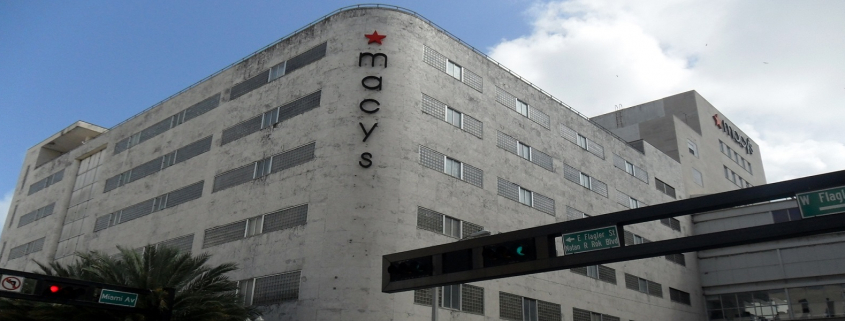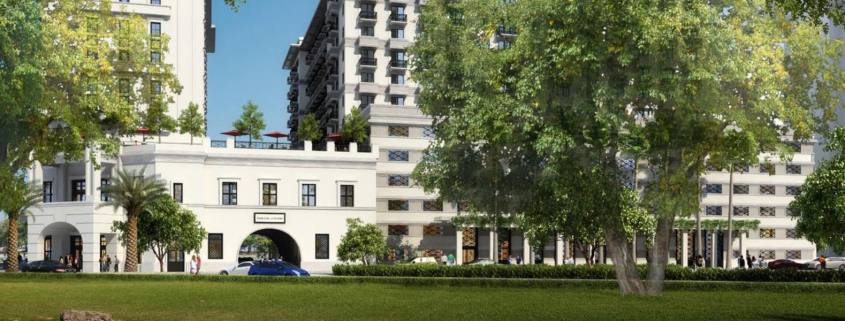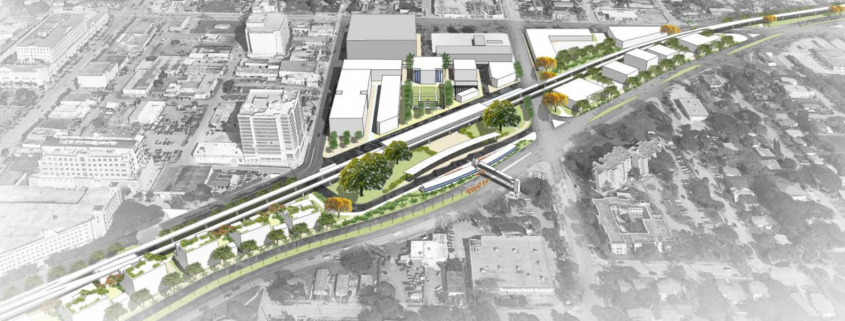Macy’s historic location in downtown Miami is among the latest of its stores to fall victim to a national cutback plan that will include the elimination of 5,000 jobs in the United States.
The company said last week that it expects to save $300 million by closing 11 stores around the country early this year, cutting payroll and streamlining some in-store functions.
“We anticipate our net headcount reduction will be approximately 5,000, including the staffing adjustments across the stores’ organization, further streamlining in some non-store functions and impact closure of 11 stores,” said spokeswoman Jacqueline King in an email.
Besides the Miami store and one at The Oaks Mall in Gainesville, the company will shut four locations in California and others in Idaho, Indiana, Michigan, Ohio and Vermont. The moves are the latest in a plan disclosed in late 2016 to close 100 stores. Thus far, the company has disclosed 81 of the 100. The latest on the hit list will start eight- to 12-week clearance sales.
Macy’s said it intends to close about 19 more stores as leases expire or real estate sales are completed. Last year, Macy’s closed its store at CityPlace in West Palm Beach. Nearly a dozen stores remain in operation in Broward and Palm Beach counties. More than a half-dozen operate in Miami-Dade County.
“Our primary focus in 2017 has been to continue the strong growth of digital and mobile, stabilize our brick-and-mortar business and set the foundation for future growth,” CEO Jeff Gennette said in a statement. “Looking ahead to 2018, we are focused on continuous improvement and will take the necessary steps to move faster, execute more effectively and allocate resources to invest in growth.”
The Miami building is viewed as an anachronism by developers, planners and analysts as the downtown area attracts a younger population that generally avoids department stores and prefers to shop online.
“The departure is a good thing,” Mika Mattingly, a Colliers International real estate agent. “There are so many positives. There are a lot of scenarios that are inviting. First among them: educational institutions that could use the space.”
Located at 22 E. Flagler St., the downtown Miami store once anchored the Florida-based Burdines chain, which got its start in 1898. Burdines joined Federated Department Stores in 1956. Looking to leverage the Macy’s brand, Federated lumped the names together into Burdines-Macy’s in 2004, only to strip away the Burdines label a year later. At one point, the location served as corporate headquarters for Macy’s Florida.
“I think this is a huge opportunity for the current owner to really capitalize on a piece of real estate that is completely underutilized,” said Zach Winkler of JLL, a national commercial real estate brokerage firm.
A decade ago, the Downtown Development Authority feared Macy’s might leave downtown as the company wielded the possibility as a bargaining chip for a more aesthetically pleasing downtown.
“It’s been a pillar of downtown for a long time,” said Alyce M. Robertson, executive director of the DDA. “It’s sad to see a major retailer go. Had this happened 10 years ago, we would have faced a much more serious impact.”
But now, amid a post-recession construction boom that delivered high-rise hotels, retail, condos and offices, the urban center is a more vibrant place.
“The population has more than doubled,” Robertson said. “It’s a younger demographic. The property itself could use a facelift. It’s not the most welcoming place. They used to have a restaurant on the first floor on the west side. It would be nice to have some kind of street-level presence to engage the pedestrians on the new Flagler Street when it’s built out.”
Jason Shapiro, managing director of Aztec Group, a Miami real estate finance and investment firm, said the building should be divided up into smaller spaces for restaurants, smaller retail and shared work spaces.
“It’s still the core of the core from a location perspective,” Shapiro said. “I’d be surprised if you didn’t see a wholesale change for the better in the next couple of years.”
Source: SunSentinel
















